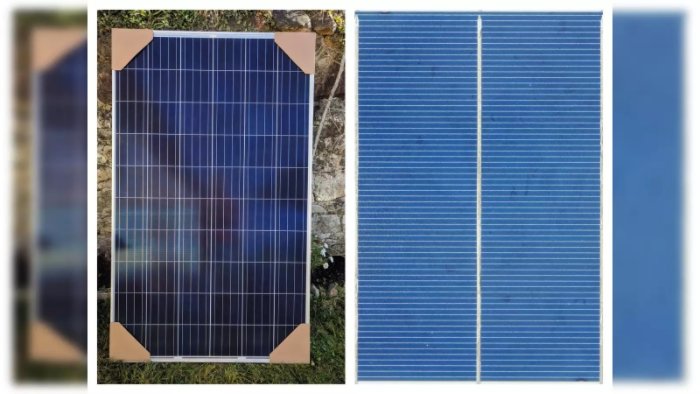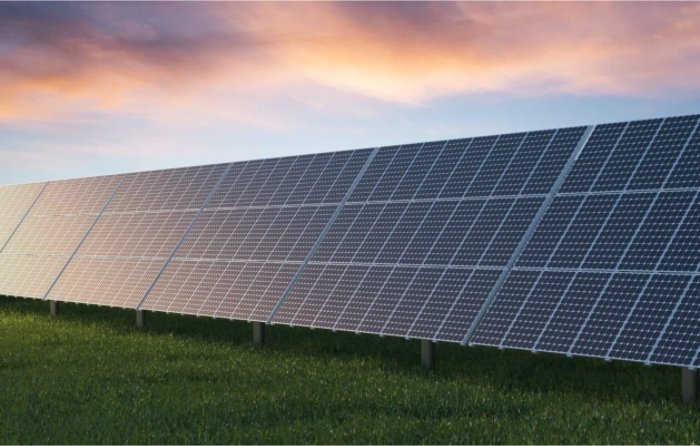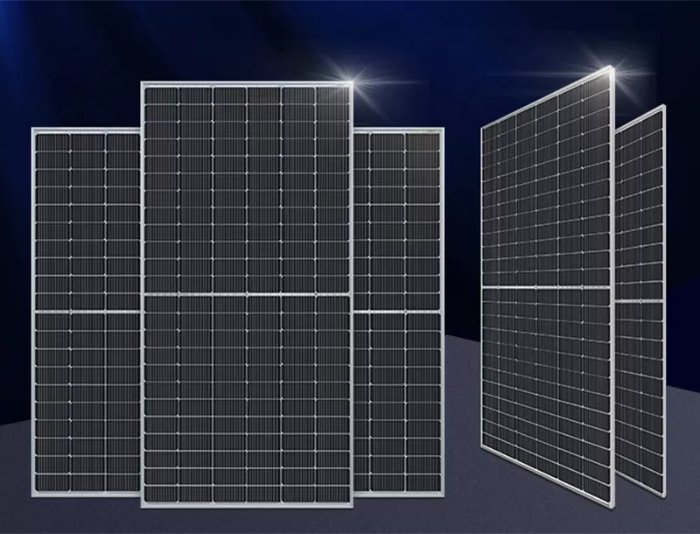Scalability and Flexibility
Modular solar panels are probably one of the most promising technologies that could change large-scale solar installations forever. These panels are designed to grow and adapt as the need for energy expands. The most critical advantage of these panels is scalability without tremendous disruption: while some constructed solar farms start big with fixed capacity modular solar panels allow organizations to build as much as they can afford to . This aspect also helps by reducing risk of investing in a technology that may become obsolete in several years.
Another reason why modular solar panels are gaining more and more popularity is flexibility in the system’s design. Firstly, these panels can be installed in virtually any terrain or available land space. They can be assembled on a building’s roof or even designed as a part of building’s architecture or spread out on irregular land or even desert like they were at the Denver International Airport. The solar panel installer made sure to maximize the area without interfering with airport operations.
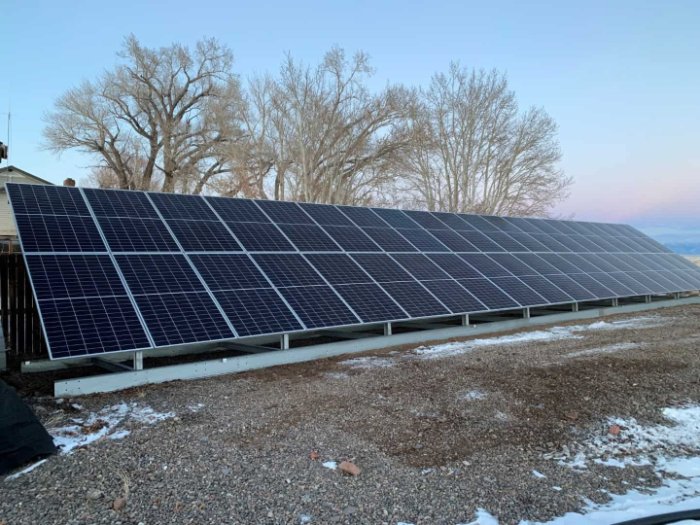
Efficient Maintenance and Replacements
Modular solar panels are also relatively simple to maintain and replace. The main advantage is that one module does not have to shutdown the entire system. This aspect is huge when dealing with hundreds and thousands of modules: while achieve minimum disruption from regular maintenance or replacing dysfunctional modules with fixed or new ones the organization will not have to shut the entire station down. That advantage was not lost when the solar farm operating in the Mojave Desert replaced the old, aged modules with new, high-efficiency ones . The upgrade increased the system’s output by 15% and the loss in operation while changing the modules was virtually none.
Energy Management
The energy management advantage is also noteworthy because module’s ownership of independent ascent means that each module can take care of itself and adjust the power generating output appropriately. This aspect is very valuable since many solar energy producing plants operate in an urban environment where some area of the farm may be shaded or damaged, which means that all other modules will have to generate more energy to cover the losses. These systems can also work well alongside the smart grid technology, which is very important in urban environments where electricity consumption levels vary drastically from quiet night to peak-producing or peak-consuming day hours.
Enhanced Design Options
Modular solar panels are not only convenient because of their scalability and energy efficiency but notably because of the advanced design options they provide. This applicability, however, can be most effectively utilized with large-scale solar installations, which have to deal with a greater number of complex and often inconvenient environmental and spatial conditions.
Adjustability for varying landscapes
Traditional solar farms require a significant iterative surface on which they should be located as it is optimal for their placement. However, such conditions are not readily available, as many landowners are unwilling to sell the land, and those who are are not necessarily doing it for the purpose of solar power production. Meanwhile, modular solar panels may be an effective option to provide solar energy elsewhere on smaller more complicated plot, such as on hills, irregular, soaking fields, or even water surface . The Anhui floating solar farm is one of the examples of this adaptability, as modules can lay directly on the water surface, which would otherwise be hardly suitable or cost-efficient for any energy production use.
Customizable forms for aesthetic integration
Some areas where solar installations appear to be more beneficial for use require that they should be visually pleasing in the urban environment or in landscapes with aesthetic requirements. Meanwhile, modular panels can be constructed in different forms and shapes to be an visually acceptable addition to a building or public installation, or even an element of an art object. The Solar Ivy solar mod for the University of Graz, for example, is designed to look as ivy while providing some actual mod small leaf-shaped modular solar panels for energy production.
Adjustment for challenging environments
Specialty modules for extreme conditions. Some environments have extreme conditions for the use of solar panels, such as high wind speeds or snowload. Meanwhile, these conditions can be mitigated with specially designed modules with an appropriate amount of anchoring. An example of this is a solar panel on a coast in Sitka, Alaska, where extreme cold and high wind requires a different kind of anchoring, while simultaneously overcoming solar electric limitations of a power plant on the same island .
Use of bifacial modules to optimize the capture. A bifacial technology captures sunlight from both sides and disproportionally beneficient when sunlight would be rare. One of such examples is in Northern Sweden, where a modular installation was built to absorb the reflected light from large surrounding snowcover .
Simplified Installation and Maintenance
When speaking of large solar projects, modular solar panels are the way to go, as their installation and maintenance processes are significantly simplified by design. Being modular, they require less labor, time, and, consequently, less complexity than traditional installations. There are three factors that play into making that a true statement: quick assembly, reduced maintenance complexity, and extra features achieved through technological integration.
There always less time spent on the project. Modular solar panels are assembled in advance, often in controlled circumstances, and so they can be quickly delivered and installed on-site. This feature in one of the projects in Texas, the 5 MW solar farm, cut down the total time of installation by around 40% when compared to the traditional approach. For the manufacturing of the solar farm using modular panels, around 1,000 panels were installed per day with the maximum speed.
Simplified Installation
One step, for example, for one 10×6 foot panel may be taken with one and the same probability over a sufficiently large area; another step may be taken as a separate module, submitted for approval, and then used by the whole company.
In another similar project, the Sahara Desert solar farm, a small team was able to cover the several acres of the sun via standardized 10×6 foot solar panels in under a few weeks of work.
Reduced Maintenance Complexity
In more precise terms, no two or more panels in a modular system affect each other, and the faulty one can be easily located. In the SunPlex solar farm in Nevada, the monitoring system will notify the few experienced people that are required to maintain the farm on the 10,000 panels, at the most, that a single panel is near the end of its life. In the Gobi Desert, the thousand-panel sections work on their own terns and can be shut down, repaired, and replaced, all while the power flow never stops. The Silicon Valley Solar Tech Center sells solar panels with a preset algorithm of maintenance that depends on the data that the software process.
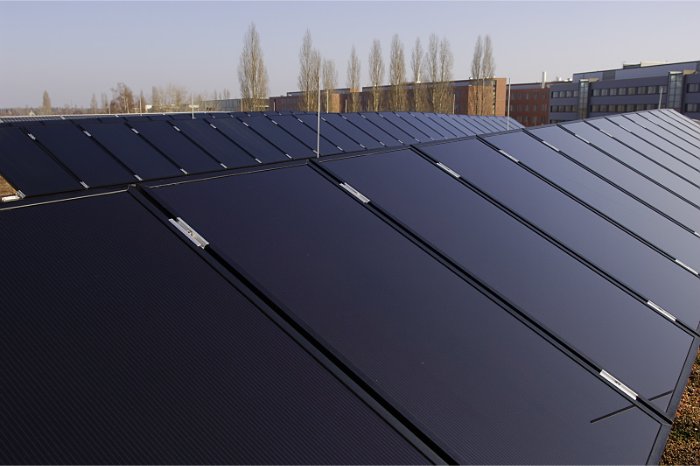
Improved System Performance
Modular sets of solar panels not only provide logistical and installation ease but also directly improve the performance of large-scale solar power systems in a variety of ways. With the focus on increased energy output and reliability, the introduced innovations are pushing the boundaries of solar technology performance.
Maximum energy production via optimal configuration. Depending on the available space and solar exposure, solar panels can be configured in a way to keep them non-leaning and parallel to the sun for the entire day. In contrast, a fixed modular configuration of a large solar farm in California can achieve a 20% improvement in energy production due to the configuration that follows the sun . The system’s mounts are motorized and adjust the angle of each module. The motor adjusts each unit of the arrangement individually based on the energy capture data obtained through measuring the sun’s trajectory.
Decentralized configuration to minimize lost energy. With each modular set of panels equipped with a microinverter, the alternating current is immediately converted from direct current and then used in-place, thereby minimizing the lost energy that occurs when DC travels across a long distance to reach the central inverter. As a result, the use of modular design within the Sonoran Desert Solar Project led to a decrease in lost energy at the site of 5% or above.
Reliability and Durability
High durability. The construction of modular solar panels includes materials and mechanisms that are designed to withstand specific environmental conditions. For example, in the Florida coast, where frequent hurricanes can adversely affect solar power installations, these are designed specifically for the task of withstanding such environmental challenge factors. This design includes the use of reinforced frames and secure mounting systems that can withstand the elements of high winds and flying debris .
Long lifespan. The lifespan can easily be extended since the modules are easily replaceable – when the older models upgrade no longer match the capacity of the new panels available, the old ones are replaced. For example, in the Arizona Desert Solar Park, which had a regular maintenance scheme that included blanketing the solar panels at the top of each solar tower, maintenance workers would have replaced the old “blanket” with a new one. Over the years, the entire park was reconfigured in this way, significantly extending the lifespan of the energy plant.
Improved performance and long-term use
Real-time performance monitoring. The performance of each module can be easily monitored given that each module has its own control system in place. As a result, there is reduced downtime as the discrepancy can be quickly addressed in maintenance. For example, the performance monitoring data in the Great Plains Solar Field is used for implementing real-time troubleshooting measures when the underperforming module data becomes available and up-to-date.
Monitor-and-adapt approach for grid power supply. The modular solar power plants offer the ability to monitor performance and calibration data and, as a result, adjust and control the power supply in smaller increments. For example, The Nevada Solar Array’s integration system feeds the data to the grid on the real-time demand and pulls the power used in that area. This results in remote operation of the grid and more predictable and stable power supply.
Increased Reliability and Durability
The collaborative work of a modular solar panel in large-scale solar installations increases both reliability and durability. It occurs because of the state-of-the-art manufacturing technology, the high quality of individual components, and innovative design features that make the solar power systems more immune to different types of problems.
Less frequency of system failures
Superior reliability modular solar panel can be fitted with internal monitoring technology that can detect or be the cause of a system failure. As soon as the problem happens, the monitor reports what the problem is and the location of the problem, which makes it easy to fix. The Sun Valley Solar Complex had a 30% reduction in a system failure rate. A similar rate can take place on continuous monitoring that can help to prevent major system failures.
Longer lifespan from a more durable construction material
Specially designed materials are used in the manufacturing of solar panels that can absorb the UV rays, and they have a longer lifetime in the solar system. A solar farm located in the Maine state of the USA has the coating of the surface of the panel with anti-reflective material that is light and highly durable that can avoid the salty mist that damages the panel in Maine and metal at coastal parts as well, whereas rain also damage the panel in Maine. The purpose of solar panels installed in the west of the Iowa state of the USA is different as it can avoid the hot sun and storm in that area that destroys the value of the panel. The durability of the panel is the same as the Maine panel. The panel in Maine has been continuously working for more than ten years.
Less energy is lost due to less heat in the solar panel as a result of the cooling system. The tendency for energy loss in a solar panel depends upon the heat of the solar panel. The solar panel loses a comparatively less amount of energy as the heat loss of a solar panel occurs in the part or surface of the solar panel. The Mojave Desert Solar Station has replaced its solar panel to avoid waste of a high amount of energy in the solar panel that was no longer usable.

